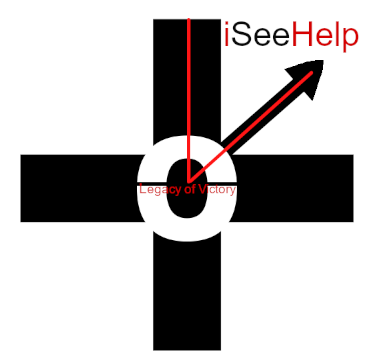Who Is More Important?
Affirmative Action for Why, Who, What, When, Where, How

Just ask. That’s what my mother said to do when I was 10. Just ask. Questions. Ask questions that clarify your direction. Ask questions that make a difference to find out what to do first. Ask questions where there are no clear answers. That’s what we forget to do.
As an instructional designer with one professor in a graduate class, he once asked us, “Which is more important?”
- Who?
- What?
- When?
- Where?
- Why?
- How?
Design is about how. Discussion followed. As class participants gave their opinions about how how is the key, I realized more clearly why I came to the conclusion that who was more important than how. I spoke up. That counterintuitive, countercultural response stopped the conversation. I had derailed the professor who was trying to make a point of how instruction was delivered was most important. Class dismissed.
Who
Methodology, that was my focus for designing instruction, became second place. Actually, then it became third place, then last place. I’ll explain why.
Why
Integrity.
The person — the who — the one writing, speaking, or teaching is more important than the method of delivering information. Can I believe what that person is saying? Why or why not? Is it true? What is the evidence. Always consider the source.
Evidence suggests that facts can be ignored for policy perceptions that ignore data. Thomas Sowell explains in more Social Justice Fallacies.
What
Ask. There are four questions that help us work through deception.
- Is it true?
- Can you absolutely know it’s true?
- How do you react — what happens when you believe that thought?
- Who would you be without that thought?
I discovered that when I believed my thoughts I suffered, but when I didn’t believe them I didn’t suffer, and that this is true for every human being. Freedom is as simple as that. I found that suffering is optional. I found a joy within me that has never disappeared, not for a single moment. That joy is in everyone, always. And I invite you not to believe me. I invite you to test it for yourself.
— Byron Katie
Decision-Making
Not only do Thomas Sowell and Byron Katie check the facts before making decisions, they inform others how to make decisions, emphasizing why that matters. Some of those decision that have been made over the last century have proved to be false based on facts. Is there evidence?
Why are lies perpetuated through the universities, classrooms, and seminars? Where are words believed as truth when facts reveal the propogation of fake news, if no evidence exists? Behe, Lennox, and Meyer reveal fallacies of thinking based on archeological evidence instead of Darwin’s theoretical lies.
Each tree is know by its own fruit. There is a root cause.
Root Cause Analysis
Don’t believe everything you hear. Don’t say everything you think. We have a tendency to think that we are right. But check it out. Check the what now.
Another way to recognize the importance of “who” over “how” is by asking “why” to get to “what.” Root cause analysis is a technique to increase awareness.
A root cause analysis allows an employer to discover the underlying or systemic, rather than the generalized or immediate, causes of an incident. Correcting only an immediate cause may eliminate a symptom of a problem, but not the problem itself.
What is the 5 Whys Technique?
5 Whys is an iterative interrogative technique used to explore the cause-and-effect relationships underlying a problem. The goal is to determine the root cause of a problem by repeating the question “Why?”. Each answer forms the basis of the next question. The “5” in the name derives from an anecdotal observation on the number of iterations needed to resolve a problem. The technique was originally developed by Sakichi Toyoda and later used at Toyota during the evolution of its manufacturing methodologies. The technique is now used within Kaizen, lean manufacturing, and Six Sigma. Here’s an example:
The Problem: The car will not start.
1st Why: The battery is dead.
2nd Why: The alternator is not working.
3rd Why: The alternator belt has broken.
4th Why: The alternator belt was well beyond its useful service life and was never replaced.
5th Why and the Root Cause: The car was not maintained according to the recommended service schedule.
5 Whys as a Root Cause Analysis Method for Workplace Incidents
The 5 Whys technique can also be used as a method for determining root causes of workplace incidents. What would 5 Whys look like in the context of a workplace incident investigation? Here’s the application of 5 Whys to an example mentioned in an OSHA fact sheet:
The Problem: A worker slips and falls, and suffers an injury.
1st Why: There was a puddle of oil on the plant floor.
2nd Why: Oil spilled from a compressor.
3rd Why: An oil leak from the compressor was not detected.
4th Why: The compressor was not inspected on a regular basis and repaired (if required).
5th Why and the Root Cause: The compressor was not in the maintenance system.
In theory it takes five “whys” to get to the root cause, but in practice there will be cases where you may use more or fewer than five “whys”.
Finally, according to the Washington State Department of Labor & Industries, these are the benefits of asking the 5 Whys:
Simplicity: Easy to use and requires no advanced mathematics or tools.
Effectiveness: Helps to quickly separate symptoms from causes and identify the root cause.
Comprehensiveness: Helps to determine relationships between various problem causes.
Flexibility: Works well alone and when combined with other methods.
Engaging: Fosters teamwork.
Inexpensive: A guided, team-focused exercise with no additional costs.
5-Whys Method
Where
Location, location, location. Maybe you have heard that phrase. Putting a lemonade stand by an isolated dirt road may reap a few customers, but not many. Purchasing a place in a busy city for a coffee shop provides customers for a profit.
We cannot often choose where we live, where we were born, where we grew up, where we went to school. Yet mobility across the world is more feasible today than in the past. Choosing where you work, live, and settle is not an easy decision sometimes. Accepting where you are in life, in stages, in states, depends on the first 3 — why, who, what — in that order. Why is your purpose, who is about you as a person and your relationships, and what references actions for the job you can do.
When
When is after why, who, what, where, but before how. Even though when is listed 5th out of 6, that does not mean it is not important. There are so many examples of timing.
To realize the value of one year, ask a student who failed a grade. To realize the value of one month, ask the mother of a premature baby. To realize the value of one week, ask the editor of a weekly newspaper. To realize the value of one day, ask a daily wage laborer with kids to feed. To realize the value of one hour, ask two people in love who are waiting to meet. To realize the value of one minute, ask a person who missed the train. To realize the value of one second, ask the person who just avoided an accident. To realize the value of one millisecond, ask the person who won a silver Olympic medal. To realize the value of one nanosecond, read today’s Wall Street Journal, and consider the war between Apple and Intel. — Alistair Begg
Jumping too early or too late has consequences. Baking a cake for too short of a time results in a slimy mess. Baking a cake too long causes rock-hard unintended consequences. Baking a cake just right is like the story of Goldilocks and the Three Bears. Waiting is essential to identify the right timing, the right fit. Each moment makes a difference because we are each accountable.
How does the story of your life end?
“Imagine there is a bank account that credits your account each morning with $86,400. It carries over no balance from day to day. Every evening the bank deletes whatever part of the balance you failed to used during the day. What would you do? Draw out every cent, of course? Each of us has such a bank, it’s name is time. Every morning, it credits you 86,400 seconds. Every night it writes off at a lost, whatever of this you failed to invest to a good purpose. It carries over no balance. It allows no over draft. Each day it opens a new account for you. Each night it burns the remains of the day. If you fail to use the day’s deposits, the loss is yours. There is no drawing against “tomorrow”. You must live in the present on today’s deposits. Invest it so as to get from it the utmost in health, happiness, and health. The clock is running. Make the most of today.”
— Marc Levy
How
Finally, last in order of the process is how. How do we do what we do after considering the first five w words? John Trent in Life Mapping suggests sticky notes to start getting thought out of your head and onto paper. That process made a difference for me. It was a brainstorming session.
I had signed up for one of his classes about 10 years ago. We were given a pad of sticky notes as we walked into the presentation room at the conference. He identified why as the reason for doing this session, for writing the book. First he gave us multiple examples of how he uses this technique with his family for making decisions of all kinds.

People tend to skip over why (purpose) and get right to how (method). That creates problems in the long-run. We stayed in our chairs and wrote sticky notes of all kinds about one project we wanted to do. Then we put sticky notes on a wall in the categories in the order of why 1st, who 2nd, what 3rd, where 4th, when 5th, how 6th.
Clarity emerged. What’s first? You are. Find out who you were created to be.
Why? Just ask who is most important. This is not an exercise in narcissism, but one way to increase self-compassion, self-worth, and self-direction.

